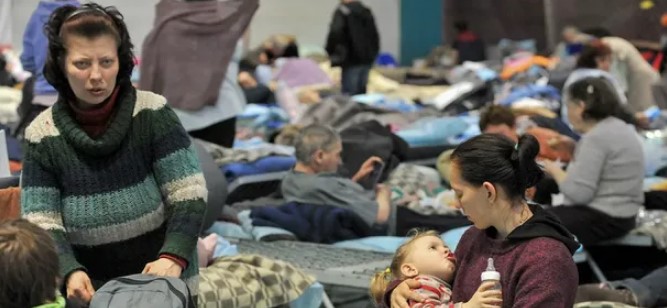Snow on the windowsill and mold in the corners: how Ukrainians live in the filtration camps of Russia

Filtering camps for Ukrainians continue to be created on the territory of Russia. The other day it became known about the construction of new camps in the Volga region. As a rule, Ukrainians who were forced to leave their cities and villages due to war or occupation are sent there.
In the camps, the Russians are checking whether Ukrainians took part in the Anti-Terrorist Operation in the east of Ukraine, whether they served in the Armed Forces of Ukraine or law enforcement agencies, and are looking for activists.
Also, Ukrainians are forced to obtain Russian passports, without which they will not be able to get a job, send their children to kindergarten or school, or receive assistance. Living conditions leave much to be desired. Very often these are old children’s recreation camps, far from populated areas, built according to the principle of a dormitory, with a common kitchen and bathroom.
Ukrainians are sent to remote regions
According to the National Center of Resistance, another filtration camp for Ukrainians is being actively built in the Volga region. It is being built under the guise of a summer recreation camp for children, for which temporary modular houses are being erected that can accommodate hundreds of people.
It became known in 2022 that the Russians were creating filtration camps for Ukrainians. Then, similar points appeared on both sides of the border. On the Ukrainian side, people lived in tents in the open air, waiting for their turn to be checked and questioned.
Then history repeated itself on Russian territory, where Ukrainians were housed in large gyms. Here, thousands of refugees and forcibly deported people from Ukraine were thoroughly checked for “benevolence”. Those who passed the filter were sent further to the Russian hinterland: Murmansk, Sakhalin Island, Vladivostok, Novosibirsk, Altai, Astrakhan, Kuzbass, Buryatia, Khakassia, etc. It was possible to get to the suburbs of Moscow or the outskirts of St. Petersburg only with the help of volunteers and benefactors.
There they were settled in the territories of boarding houses, sanatoriums, schools, sports complexes, dormitories, etc. In the Russian press, these camps are called “temporary distribution points”. But the “temporary” has been going on for the third year already…
Filtering and new documents
Nothing has changed until now. People don’t have even elementary means of hygiene. They live in a shabby old dormitory, the management does nothing to improve their situation. Those who turn to this guide for anything, even a bar of soap, run the risk of becoming homeless altogether.
At the same time, newly arrived Ukrainians are carefully checked by the special services: documents are selected, they are interrogated. The “suspects” are handed over to the FSB.
Also, Ukrainians are forced to obtain Russian passports, without them it is impossible to send children to kindergarten or school, and adults are not hired. However, documents are issued quickly to Ukrainians from the occupied Donetsk and Luhansk regions. But those who left Kharkiv, Zaporizhzhia, and Kherson regions have to wait a long time. It is impossible to establish a place of residence for them, so the processing of documents is delayed.
Children of Ukrainian refugees often face bullying in Russian schools. Locals call them names, call them “khokhlas”, even beat them. The management of educational institutions usually does not pay attention to this.
